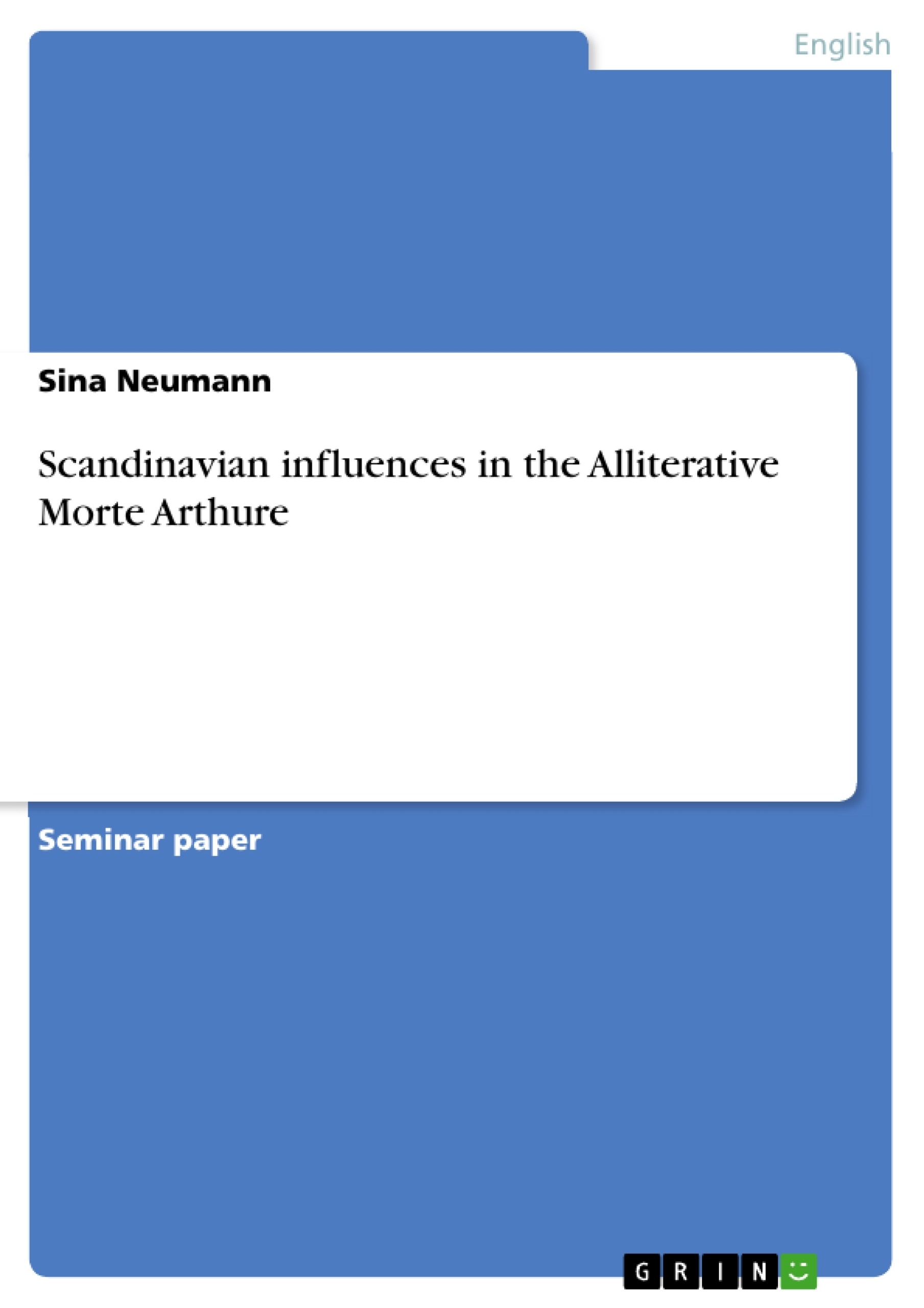The number of Scandinavian loanwords for which the evidence of being part of the English language is fully convincing is about 900 and these are almost always words designating common everyday things and fundamental concepts. It also exists an equal number of words which are probably of Scandinavian origin or in which the influence of Scandinavian forms has entered. Today there are thousands of Scandinavian loan words in the English Language. Most of the Scandinavian loan words first appeared in the written language in Middle English (1100 - 1500), but many were no doubt borrowed earlier, during the period of the Danelaw from the ninth till the tenth century.
The aim of the paper is to give evidence whether the "Alliterative Morte Arthure" was told under strong or weak Scandinavian influences in England, perhaps in the areas of the Danelaw or elsewhere. It is therefore necessary to give a brief history of the settlement of Scandinavian tribes in England and their influence on the language as well as a general overview of possible loans and how to test them. Afterwards the existence and meaning of Scandinavian loan words in the Alliterative Morte Arthure will be analyzed and discussed.
Inhaltsverzeichnis (Table of Contents)
- Introduction
- How the Scandinavians entered England
- Consequences of the invasion
- What can be said about the borrowings in general
- Borrowings that give evidence of Scandinavian influences
- Findings in the "Alliterative Morte Arthure"
- Conclusion
Zielsetzung und Themenschwerpunkte (Objectives and Key Themes)
This paper aims to investigate the extent of Scandinavian influences on the "Alliterative Morte Arthure". It seeks to determine whether the poem was written under strong or weak Scandinavian influences, particularly in areas associated with the Danelaw. This will be achieved by examining the historical context of Scandinavian settlement in England, analyzing the impact of the invasion on the English language, and exploring the presence and meaning of Scandinavian loan words in the "Alliterative Morte Arthure".
- Scandinavian influence on the English language
- The historical context of Scandinavian settlement in England
- Analysis of Scandinavian loan words in the "Alliterative Morte Arthure"
- The impact of the invasion on English culture and society
- The significance of the Danelaw in shaping linguistic and cultural patterns
Zusammenfassung der Kapitel (Chapter Summaries)
- Introduction: This chapter provides an overview of the Scandinavian influence on the English language, highlighting the significant number of Scandinavian loan words incorporated into the language. It outlines the objective of the paper, which is to investigate the presence and impact of Scandinavian influences in the "Alliterative Morte Arthure".
- How the Scandinavians entered England: This chapter explores the historical context of Scandinavian settlement in England, tracing the origins of Viking raids and the establishment of the Danelaw. It describes the various phases of Viking activity, from early raids to widespread plundering and eventual assimilation.
- Consequences of the invasion: This chapter focuses on the lasting impact of the Scandinavian invasion, particularly the establishment of the Danelaw and the significant number of Scandinavian settlers in England. It examines the cultural and linguistic consequences of this settlement, including the influence on place names and the adoption of Scandinavian customs.
Schlüsselwörter (Keywords)
The key focus of this paper is on Scandinavian influences on the English language, specifically examining the "Alliterative Morte Arthure". This includes investigating the historical context of the Viking invasion, the impact of the Danelaw, and the analysis of Scandinavian loan words present in the poem.
- Quote paper
- M.A. Sina Neumann (Author), 2002, Scandinavian influences in the Alliterative Morte Arthure, Munich, GRIN Verlag, https://www.grin.com/document/6913



